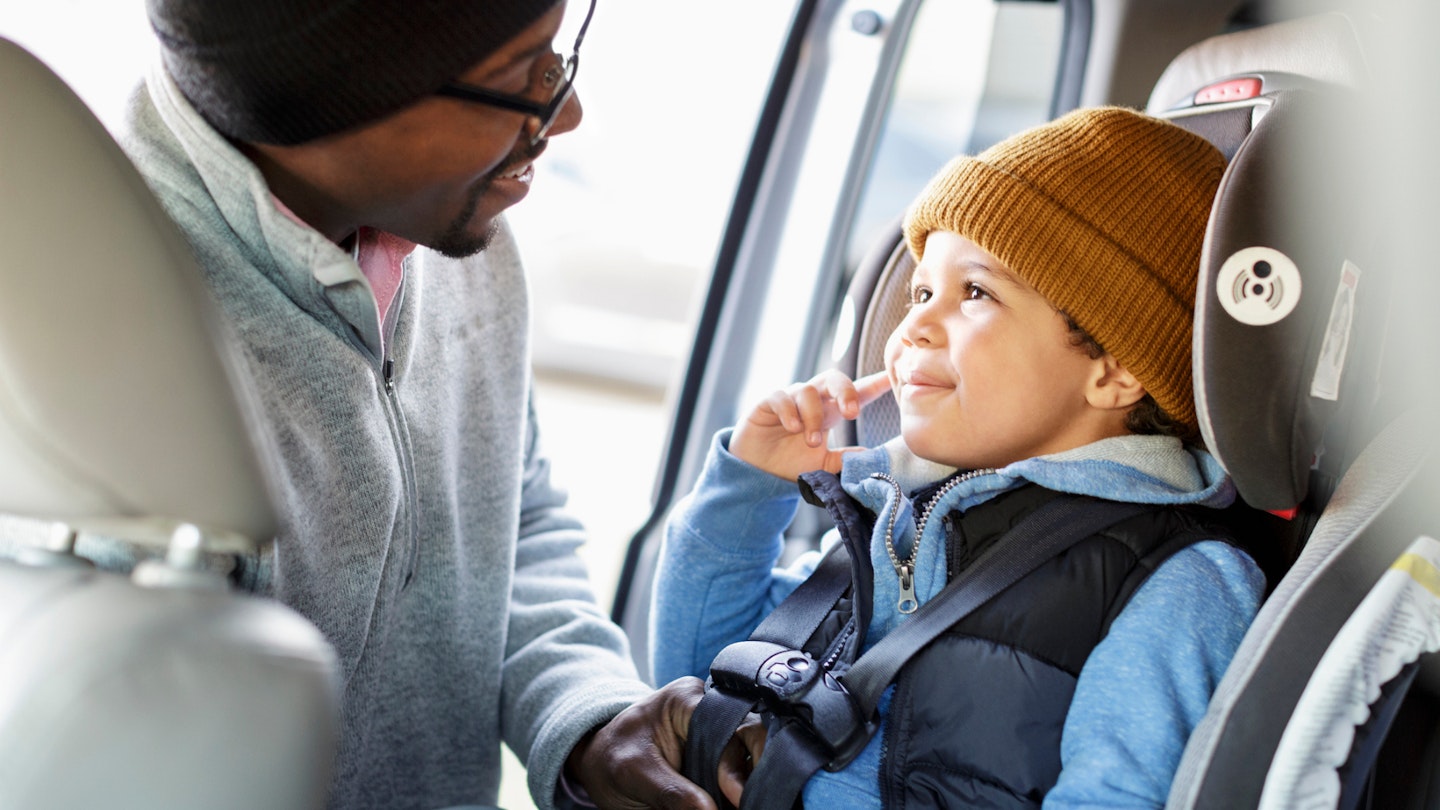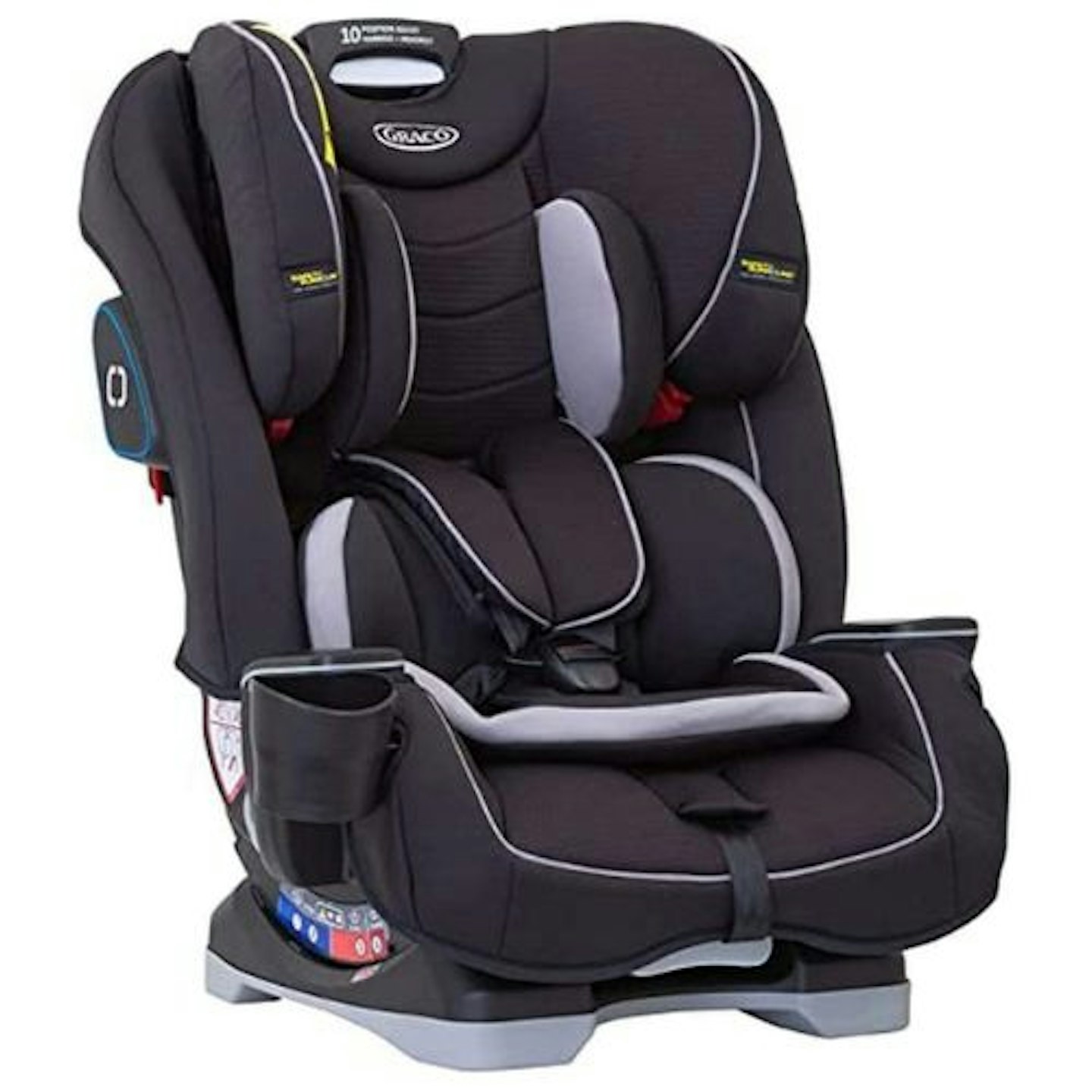If your toddler is outgrowing their car seat or you’re in the market for a car seat that’ll last for years to come, we’ve found the best car seats for 5-year-olds that’ll keep them as safe and secure as possible, no matter how much they wriggle!
In the UK, all children need a car seat until the age of 12-years-old, or if they are less than 135cm tall. As a result, the car seat market is flooded with various different types of car seats from toddler car seats that rear-face to baby-only car seats and others that'll last from birth all the way up and into their tweens.
The best car seats for 5-year-olds at a glance:
-
Best overall car seat for 5-year-olds: Cybex Gold Pallas G i-Size Car Seat, Buy on Baby Security
-
Best comfortable car seat for 5-year-olds: Graco Slimfit Car Seat, Buy on Amazon
-
Best multi-functioning car seat for 5-year-olds: Joie Bold Car Seat, Buy on Mamas and Papas
We've tried and tested an array of car seats for 5-year-olds to find the ones that'll give your backseat buddy the optimal safety they require, as well as broken down everything you need to know and be looking for in the right car seat for your child.
The best car seats for 5-year-olds
Best multi-stage car seat
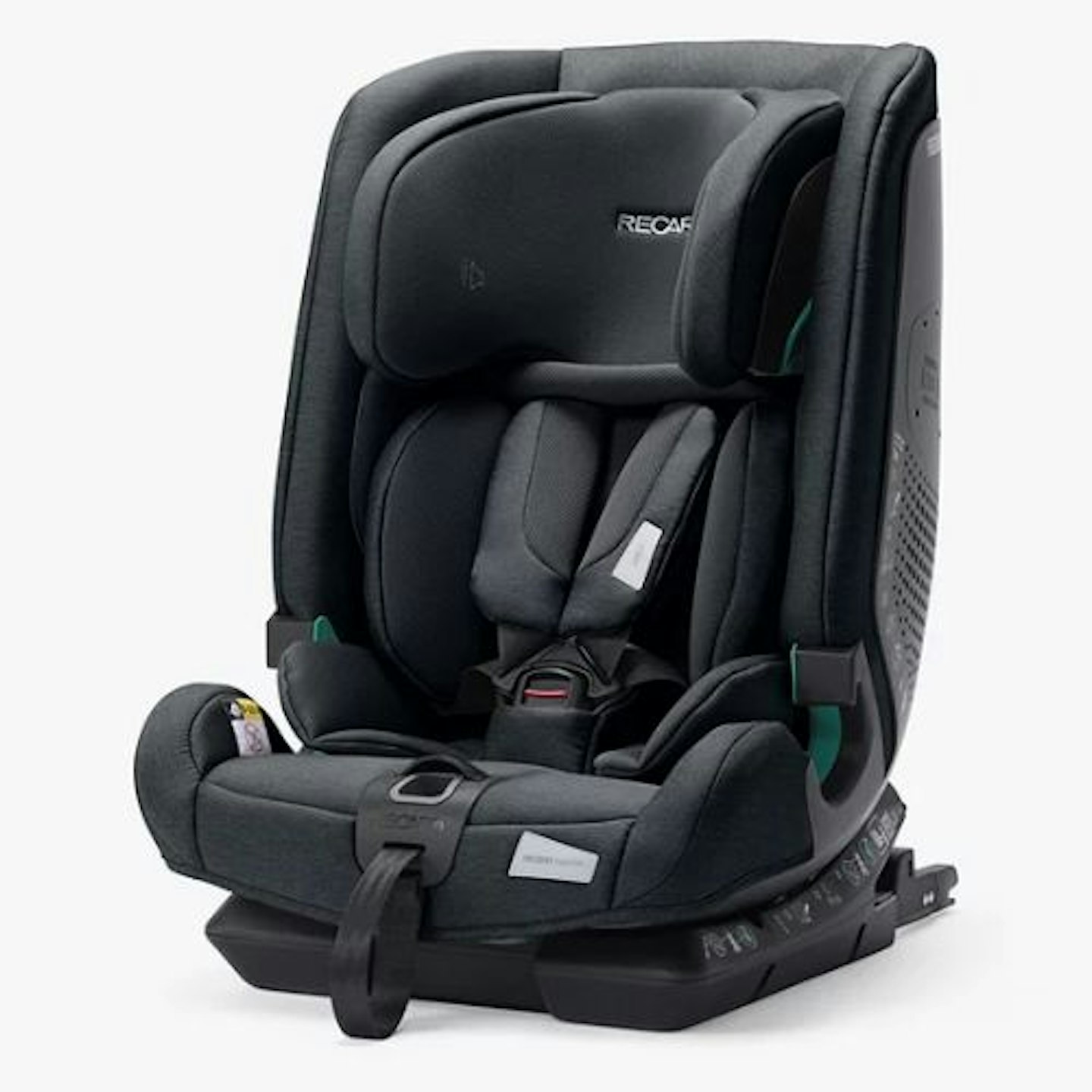
www.johnlewis.com
Award: Won Silver for the Mother&Baby Awards 2023
We think the RECARO Toria Elite is the perfect solution for parents looking for the best car seat and it will become your child's companion for the next 10 years. Engineered to protect children, the Toria Elite child seat combines the highest safety standards, increased travel comfort and outstanding design. The versatile child seat grows with young travellers, can be individually height-adjusted and perfectly adapts to different body sizes.
Our mum tester said: "It was easy to recline with one hand and the three positions were good for sleeping on journeys. I thought the speakers in the headrest were a lovely idea, although have not used them as of yet. The fact that this is also suitable for 15 months to 12 years offers real value for money."
Read our full RECARO Toria Elite review.
Pros
- R129-compliant (i-Size ready)
- Suitable from 15 months to 12 years
Cons
- No swivel
| Suitable from: | Approximately 15 months to 12 years old (76-150cm) |
| Booster seat type: | High back |
| Dimensions: | H62 x W43 x D49cm |
| Type: | i-size |
| ISOFIX: | Yes |
- Grows with the child and easy to convert
- Built-in sound system
- Advance side protection
- Air ventilation system
- One-handed recline adjustment
- Intuitive installation
Best all-in-one car seat
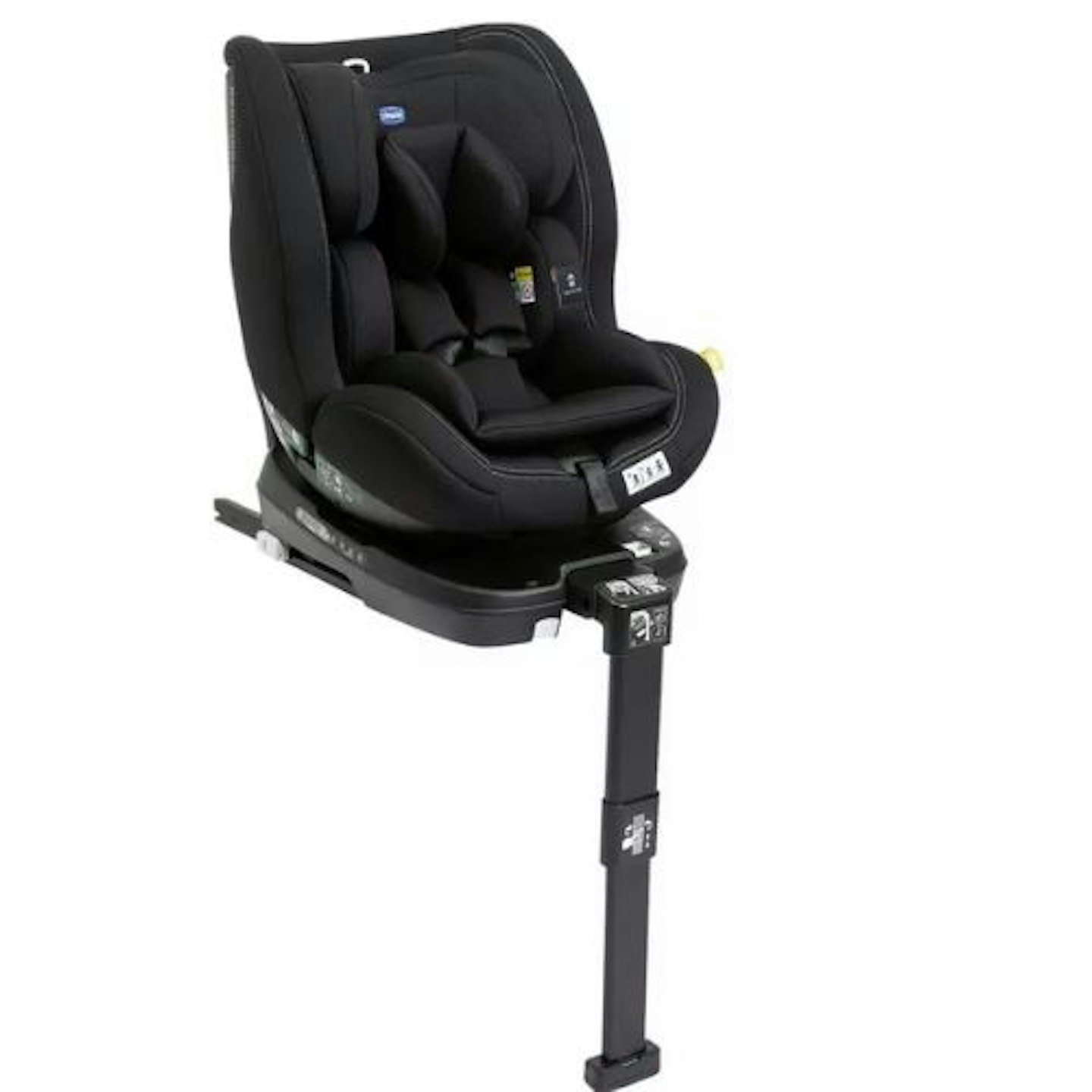
www.argos.co.uk
Award: Won Bronze for the Mother&Baby Awards 2023
This car seat from Chicco grows with your baby, as it's suitable from birth up to seven years. Thanks to its ISOFIX system, it's super easy to install, and comfortable, but its star feature is its 360° rotating system which we love.
Our mum tester said: "I absolutely love the Chicco Seat3Fit. It has so many amazing features. The fact you can turn the seat 360 degrees really is a game changer. The design and colour is perfect. I really love this car seat"
Read our full Chicco Seat3Fit i-Size review.
Pros
- Grows with your baby
- Easy to install
- 360-degree rotating system
- Six reclining positions for extra comfort
- QR code for installation video tutorial
Cons
- One mum wished it would recline just a tiny bit further
| Suitable from: | Birth up to seven years of age |
| Booster seat type: | High Back |
| Dimensions: | H61 x W49 x D44cm |
| Type: | i-size |
| ISOFIX: | Yes |
- ISOFIX
- i-Size certified
- 360 degree rotating system
- Suitable for forward and rear-facing
- Five point harness system
- Six recline positions
Best designed car seat
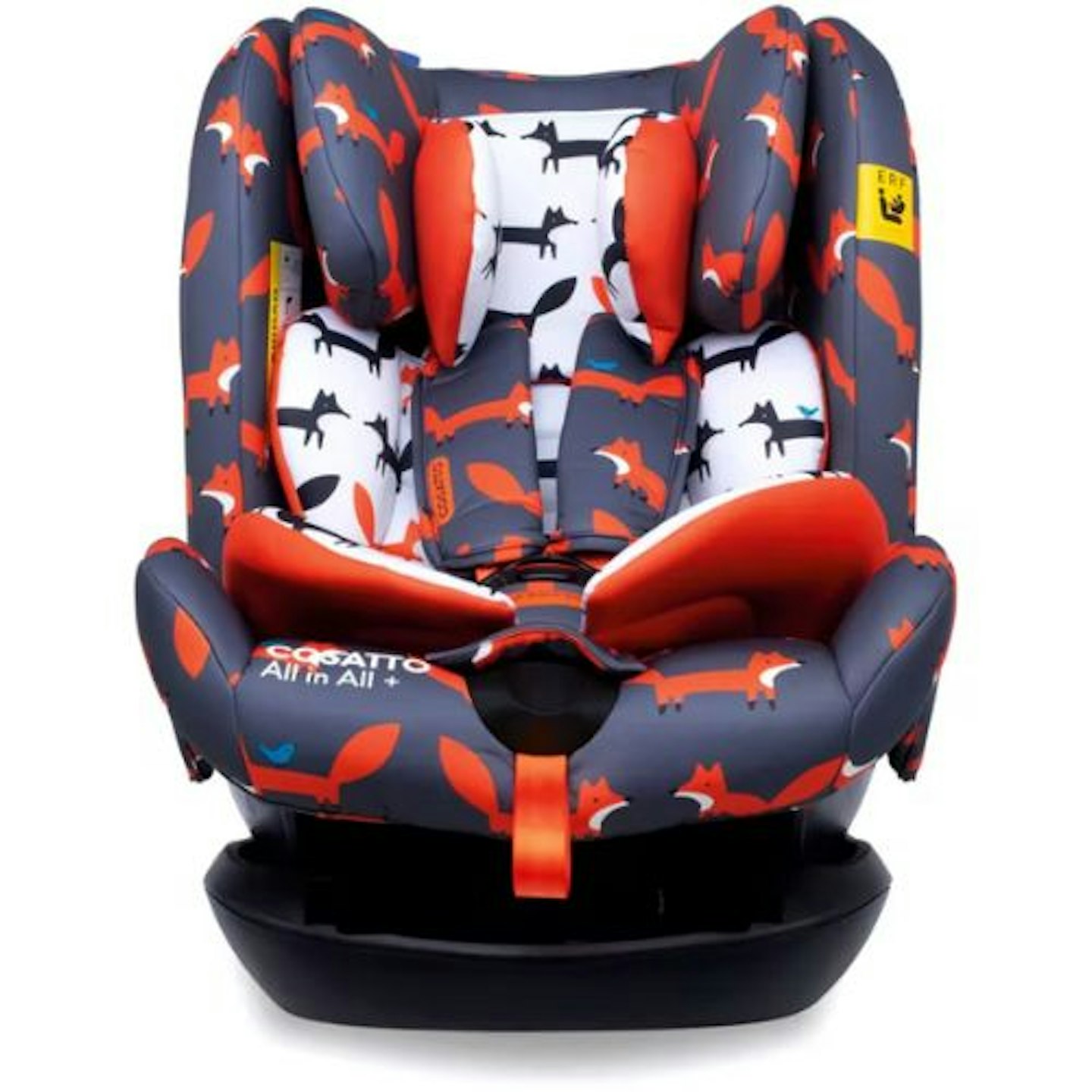
www.boots.com
Award: Shortlisted for the Mother&Baby Awards 2023
Cosatto is a household brand that is known for creating amazing products with pretty and bold designs, and this colourful car seat also hosts a whole lot of safety features. With an anti-escape system and five-point harness, you won't need to worry about your childs safety when strapped into this carseat.
Our parent tester said: "Wholeheartedly I can say with I would recommend this to mums. It is an investment that will last until you no longer need a car seat. The designs are fun and I have received so many compliments on my car seat. My son often falls asleep in the car and he looks secure and comfortable when this happens. If you are looking for a car seat that will stay in your vehicle then I think this is a fantastic option."
Read our full Cosatto All in All Rotate i-Size Car Seat review.
Pros
- Lovely designs
- Five-point harness system
- Rotating features
Cons
- Heavy to move
| Suitable from: | Birth up to 12 years old |
| Booster seat type: | High back |
| Type: | Group 0+123 |
| ISOFIX: | Yes |
- Anti escape system
- Five-point harness system
- ISOfix
- Rotating seat
Best car seat for comfort
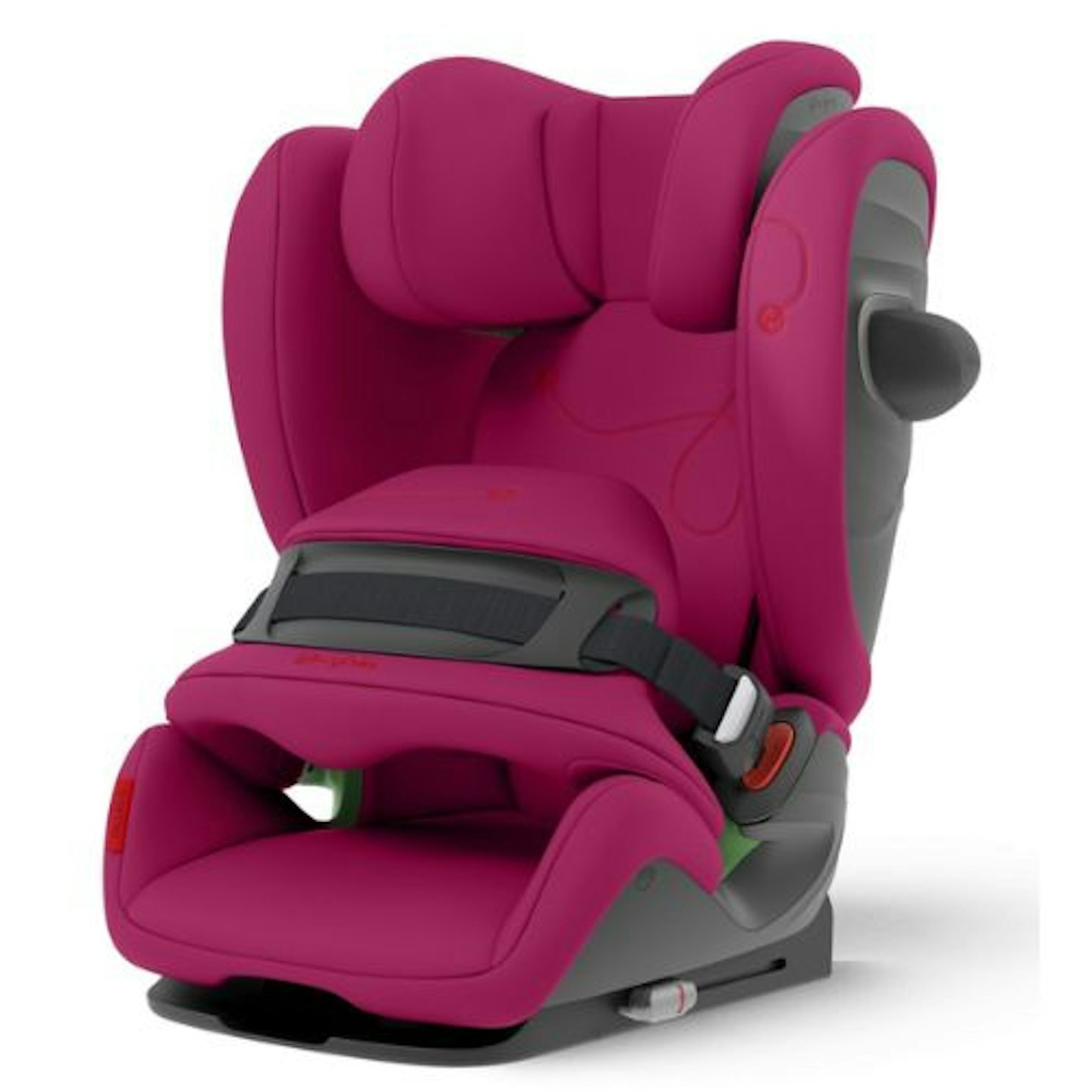
www.babysecurity.co.uk
Award: Won Silver for the Mother&Baby Awards 2022
Available in a bunch of colours, it grows with your child to provide optimum support, protection and comfort to keep them safe from 15 months until approx. 12 years old. Tested to the UN R129/03 latest standard, it provides over 40 per cent less strain on the neck whilst the impact shield helps reduce the risk of neck injuries in a frontal collision when compared to a harness system.
Our mum tester said: "It has definitely made our car journeys much more enjoyable as I don't find myself panicking that she may try to escape. The Pallas G I-Size is extremely simple to use, I was worried that the impact shield may be hard to adjust but it is unbelievably simple. My daughter even likes to think of it as a tray for her to play on whilst on our journeys!"
Read our full CYBEX Pallas G i-Size review.
Pros
- Adjustable impact shield
- Ventilation system
- ISOFIX system
Cons
- Doesn't rear-face
| Suitable from: | 15 months to 12 years |
| Height: | 76cm up to 150cm |
| Weight: | Approx. 9 – 50kg |
| Type: | i-Size |
| ISOFIX: | Yes |
- ISOFIX system
- Adjustable impact shield
- Height adjustable headrest
- Comfortable deep seat cushions
- Energy absorbing shells
Best car seat for head rest
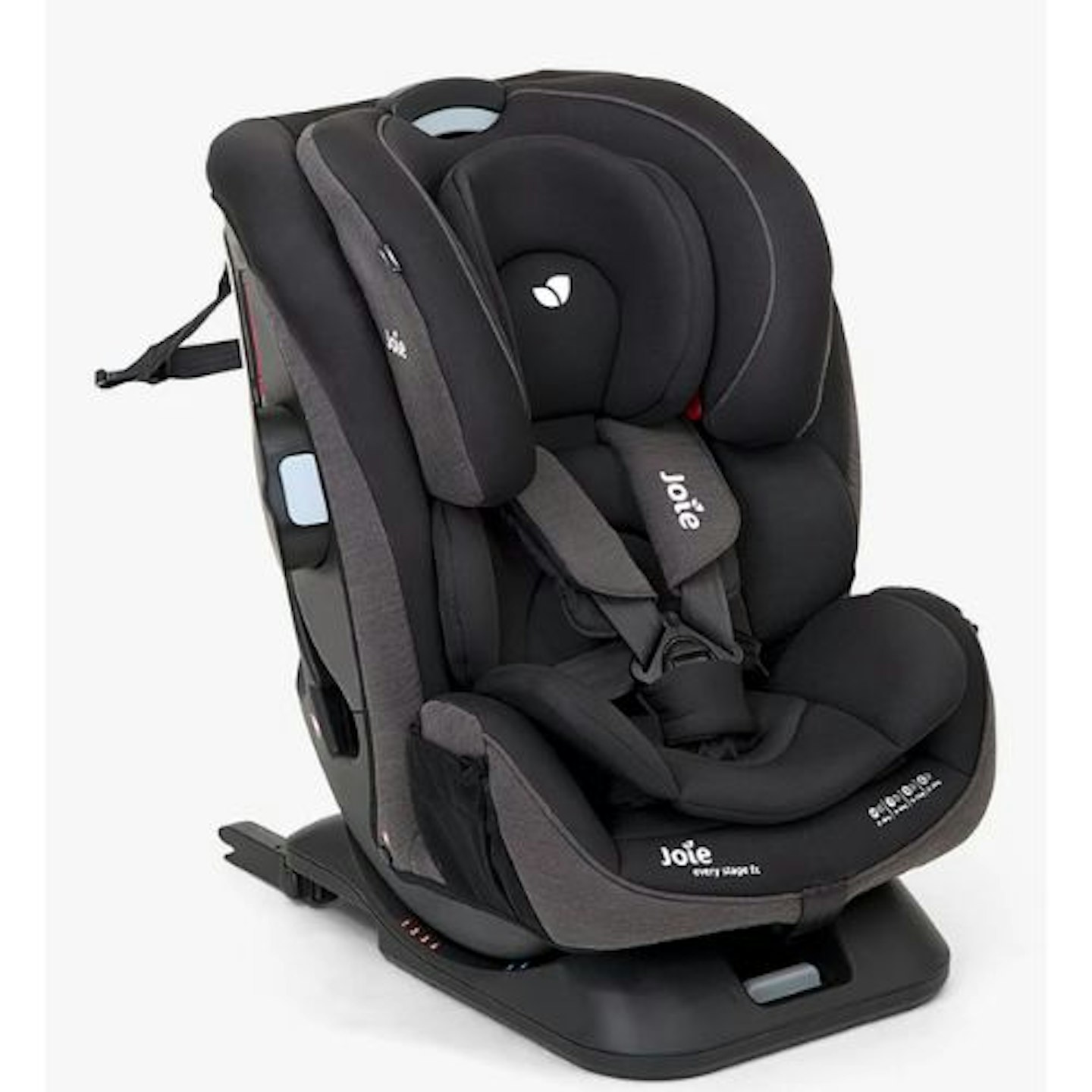
www.kiddies-kingdom.com
Award: Shortlisted for the Mother&Baby Awards 2022
This seat comes with built-in ISOFIX installation when forward-facing for group one, as well as ISOSAFE connection to keep the seat securely in place when in group 2/3 booster mode. It also has a multi-height head rest that's easy to adjust.
Our mum tester said: "I am really impressed with this product so far. We have another Joie car seat and they have always seemed to perform well. Easy to clean and look comfy. The seat was easy to install with an Isofix base and sits nicely on the backseat without movement."
Read our full Joie Every Stage FX review.
Pros
- Six recline positions
- ISOFIX system
- Easy to adjust
Cons
- It doesn't have 360 spin
| Suitable from: | Birth up to 12 years |
| Type: | Group 0+123 |
| ISOFIX: | Yes |
- Six recline positions
- Height adjustable headrest
- Side mesh storage pockets
- ISOFIX system
Best car seat for recline position
Designed for birth to approx. 12 years, this car seat has it all and should be the only one you'll ever need for your child. Rearward and forward-facing, it has True Shield side impact protection with energy-absorbing foam, a five-point harness, 10 headrest positions and four recline positions. It's slimmer than most car seats, making it a good choice for freeing up space in your backseat, and has a drinks holder for when tots get older.
Our mum tester said: "The size range is incredible. This is a huge bonus and money-saving. The testing of the seat has very good reviews which are really important to me and my friends. The easy installation of the seat is also a huge bonus when moving it between cars and saves time which is a must for any parents.
Read our full Graco Slimfit review.
Pros
- Rear-facing for longer
- Five-point harness system
- Adjustable headrest and recline positions
- Removable cup holder
Cons
- There's no ISOFIX
| Suitable from: | birth up to 12 years |
| Type: | Group 0+123 |
| ISOFIX: | No |
- Foreward and rear-facing
- Adjustable headrest
- Five-point harness system
- Removable cup holder
Best three-seats-in-one car seat
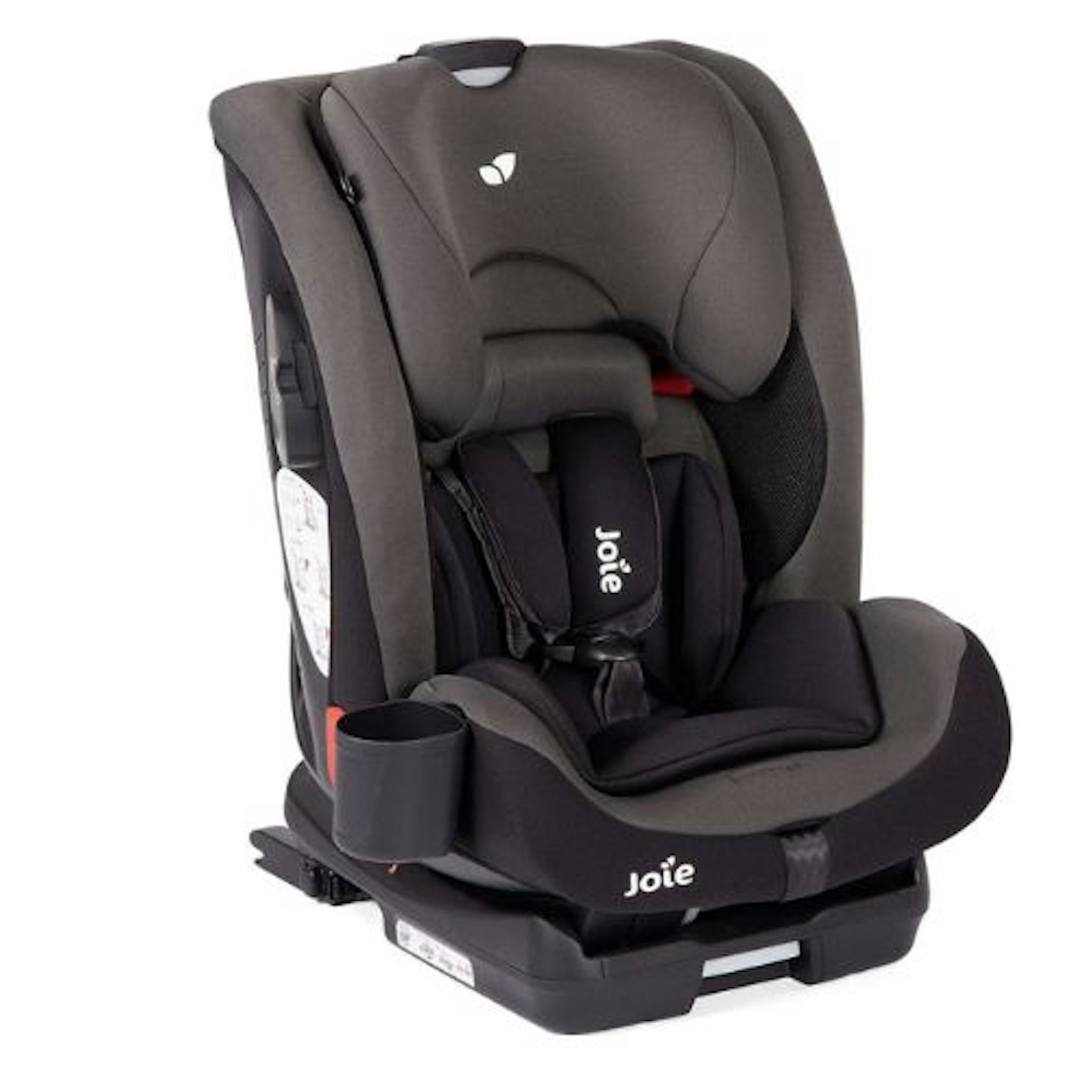
www.mamasandpapas.com
Super easy to install and complete with bonus harness protection, the Joie Bold car seat has Guard Surround Safety panels to provide side impact protection and a Grow Together headrest and harness system for simple adjustments. Accommodating little ones up to 36kg, it even comes with a handy cupholder for snacks and drinks on the go.
Our mum tester said: "The seat looks really good quality, it’s attractive and the fabric is soft. The cupholder is a small but welcome feature- having to turn round and pass a child their water bottle from the passenger seat isn’t easy- and if you’re driving then there’s no way to get their drink to them, so having them be able to grab it themselves is brilliant! The side impact sections are a good feature- I’m not sure I’ve seen anything like them before."
Read our full Joie Bold Group 1/2/3 car seat review.
Pros
- Handy cupholder
- Grow Together headrest and harness
- Guard surround safety panels
Cons
- No 360 spin
| Suitable from: | 9 months up to 12 years |
| Type: | Group 123 |
| ISOFIX: | Yes |
- Guard surround safety panels
- Five-point harness system
- Grow Together headrest
- Ventilation on side of shells
- Removable cup holder
Car seat buying guide
Choosing the right Car Seat for your 5 year old
Stage groups
When looking for a car seat for your five-year-old, you should be looking for their 'stage group' based on their weight, rather than their age. The stage groups for little ones are broken down as follows under ECE R44 regulations.
• Group 0+/1/2 car seats: Is suitable from birth to 25kg, approx. 6-years-old.
• Group 1/2/3 car seats: Is suitable for children 9-36kg, approx. 9 months to 12 years.
• Group 2/3 car seats: Is suitable for children 15-36kg, approx. 3-12-years-old.
• Group 3 car seats: Based on new safety regulations launched in 2017, group 3 car seats i.e. new booster seats on the market, are limited to children who are taller than 125cm, weighing more than 22kg.
It's recommended that you should try to keep your child in the lowest stage group for as long as possible to give them the optimal safety features, and there's no need to swap for the next stage group up until your child has outgrown their Group 1 car seat. Depending on the age of your child you may want to look into the best car seats for 4-year-olds too.
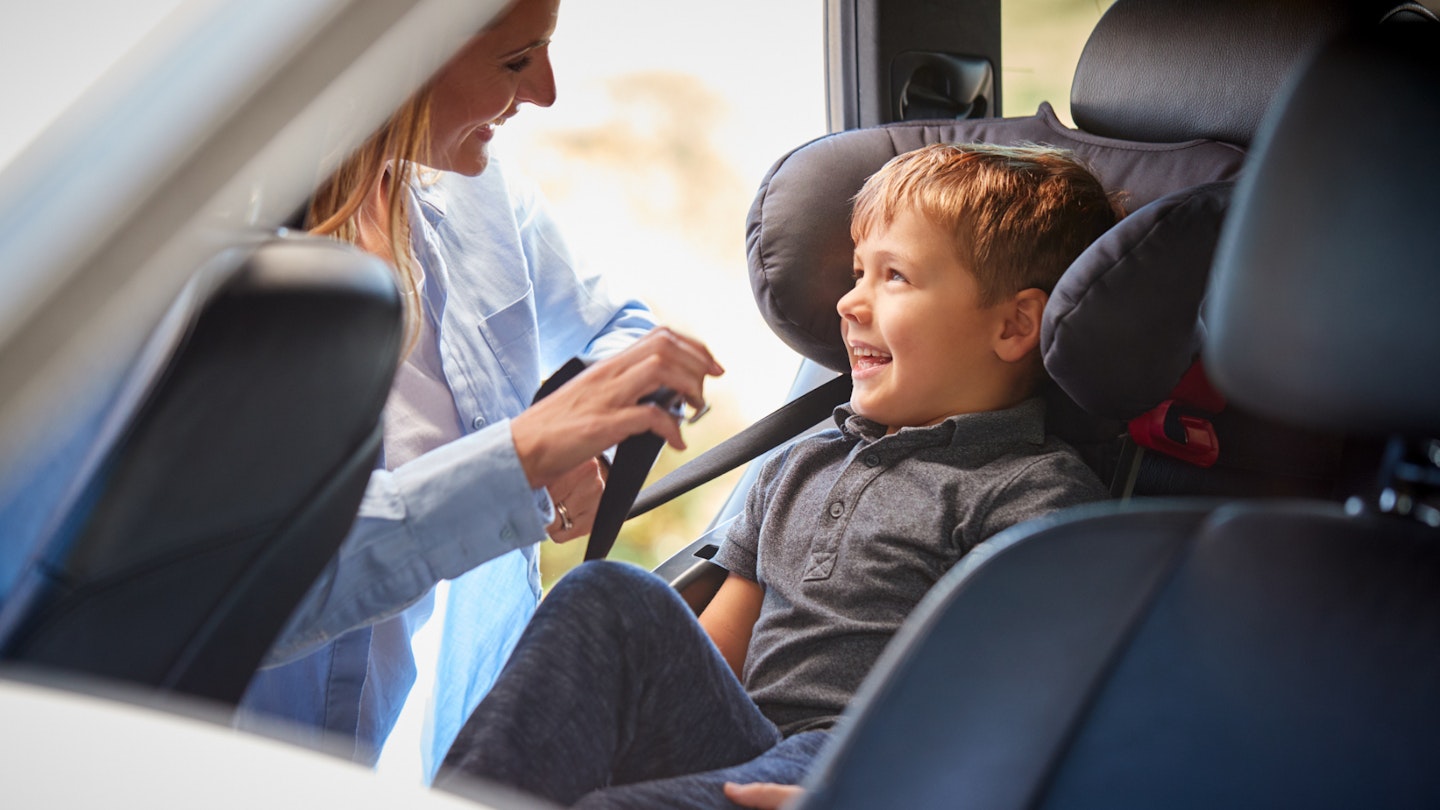
Car Seat designs
With each stage group, you'll find different car seat designs for each.
Multi-stage car seats (Group 0+/1/2 and Group 1/2/3)
Also known as combination car seats, these have been designed to carry your child from birth to the booster-seat stage and as a result, they come with an initial higher cost, but really are great value for money. These car seats are equipped with padding and a 5-point harness with most seats fitting children up to 18 or 25kg.
High back booster seats (Group 2/3)
These car seats are designed to lift your child up to use the vehicle seat belt, but come with a high back and side padding for safety and impact protection.
Backless booster seats (Group 3)
Backless booster seats are now limited to children who are taller than 125cm, weighing more than 22kg, as they have fewer safety features compared to the other stage groups and it's at this size a child will be able to wear an adult seatbelt correctly. Previously, these car seats were approved for use by children weighing between 15-36kg, but they've been deemed by the UN as being unsuitable for protecting smaller children from side-on collisions.
i-Size car seats (Height-based system)
Expected to eventually be adopted across all new car seats sold, i-Size was introduced in 2013 as safety regulation ECE R129 with rigorous testing through impact crash trials and new state-of-the-art Q dummies to test impact. Using a height-based system, i-Size car seats have been designed to take the guesswork out of choosing the right fit, provide better protection from side impacts, and keep children rearward-facing for longer, until at least 15 months or 75cm to protect their fragile heads and necks.
Law and safety for Car Seats
What is ISOFIX?
ISOFIX car seats feature two arms that lock onto small metal bars located in the seat of your vehicle. With one quick click, the ISOFIX connectors snap onto these anchor points – no seat belt threading involved. They’re accompanied by install indicators so you can be sure your child is sitting safely with a correct connection.
The rear seats of most new cars produced since 2013 have a pair of ISOFIX anchor points, but before purchasing, you should double-check that is the case.
How we test and choose recommended products
Our product recommendations are based on a combination of real-world testing from our burgeoning army of mum testers and the extensive knowledge of our experienced editorial team and product specialists. Where we can, we also consult experts who specialise in that field to ensure you get the right advice along with the right product, and we listen to what you say as well.
Our thriving mum community on our Facebook group #mumtribe consistently provides great insights into which products mums like best and why, helping us highlight the products that will meet your needs.
For essential products, our annual Mother&Baby Awards shortlist the top products tested. Full reviews from our mum testers can be found on our product pages. The winners and runners-up for each category will also appear in our top picks article for that product, along with other products that were rated highly by our team.
